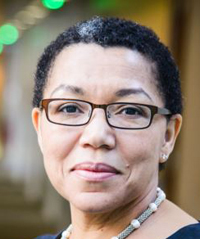Building A Culture Of Patient Centricity At Sanofi

By Ed Miseta, Chief Editor, Clinical Leader

Dr. Anne Beal has been involved in the medical community her entire career. After earning a BA in biology, an MD in medicine, and a masters degree in public health, she began her medical career as an attending physician. After spending time working for Harvard Medical School, The Commonwealth Fund, and The Aetna Foundation, she was tapped to be the Deputy Executive Director and COO and Chief Officer for Engagement at the Patient Centered Outcomes Research Institute (PCORI). In April 2014, she was asked to join Sanofi as its Chief Patient Officer.
The past year-and-a-half has been a whirlwind of activity for her, defining the meaning of patient centricity and how it applies to pharma, while developing a culture of patient engagement within Sanofi. In this Q&A article, Beal discusses Sanofi’s vision for patient centricity, and getting individuals more engaged with the trial planning process.
Ed Miseta: Since you joined Sanofi, the company has developed a vision for its approach to patient centricity. Can you discuss that vision?
 Dr. Anne Beal: Sure. First of all, we do not prefer to call them patients. We do not believe most individuals with a condition want to define themselves by their “patienthood.” Most people will define themselves as mothers, daughters, sisters, bankers, lawyers and whatever. But they will not necessarily define themselves only by their status of living with a condition.
Dr. Anne Beal: Sure. First of all, we do not prefer to call them patients. We do not believe most individuals with a condition want to define themselves by their “patienthood.” Most people will define themselves as mothers, daughters, sisters, bankers, lawyers and whatever. But they will not necessarily define themselves only by their status of living with a condition.
In sum, our vision is to work to help people take control and improve their healthcare outcomes to positively impact their health and lives. There are essentially three pillars that are part of our framework, which was developed by gaining inputs from key stakeholders including patients, doctors, FDA staff and payers, and over 100 senior leaders from across Sanofi,
- The first strategic pillar is “Input and Understanding”, which is designed to unlock the value of patients’ inputs into Sanofi business priorities. While the work in this pillar can include market research, it is also about bringing people in, and engaging with them to gain deep insights and input to understand their concerns and unmet needs to inform our business.
- The second pillar is “Outcomes and Solutions”, and it is our effort to develop solutions for people that help drive improved outcomes for their chronic diseases. Taking what we hear and understand from people living with conditions and inserting those insights into our products, devices and programs to create solutions that respond to peoples’ needs, and fit into their lives to improve the outcomes that matter to them is a business imperative. We know that this cannot be a feel-good exercise. Pharma companies will need to ask themselves what it is they are giving people living with conditions that will allow them to take control and improve their outcomes.
- The third strategic pillar is “Culture and Community”, which works to drive patient centricity as 360° business capability, while making us a more patient-centered organization where everyone feels that what they are doing each and every day is having an impact on people’s lives. We want to be an organization where employees get up in the morning and see, understand, and feel that everything we do touches a patient's life.
Miseta: I recently heard you say that there are a number of ways to engage patients and listen to them. Can you elaborate on that?
Beal: The way that we think about it is that there are a number of different ways to engage patients. Obviously, there is engagement at the individual level. Those interactions provide insight and real granularity as to how a condition can affect someone's life. But there is also benefit in working with patient advocacy groups. These groups are getting engaged in policy and access discussions and discussions around research. They bring a type of insight that individual patients can’t.
But I think we also need to be aware of what I call the “unaffiliated patients”. The vast majority of people out there with the conditions we are worried about are not involved with any patient advocacy group. Many of them are talking to one-another online or posting on chat boards, but they are not actively involved in patient groups.
I have heard people think about this in terms of race and ethnicity, income, gender, or any number of different ways. But there are reasons patients may opt to not engage, such as family responsibilities or job requirements. Whatever the reason, there are a lot of people out there who are not actively involved in patient groups. If we do not listen to them and obtain insights from them, we are doing a great disservice to ourselves and our patients.
Miseta: For these patients, is there a way for pharma to gain knowledge from the conversations they have with each other?
Beal: That is a very intriguing question, and I certainly think there is an opportunity to gain insights. For example, people living with a condition may create online communities to share information and provide support to one another. Members will go there and have conversations with each other. If we are able to perform natural-language processing of those conversations, what might we be able to learn from those insights?
Sometimes the insights are not about a product we have, but about how conditions are impacting people's lives. I think we will need to be more creative in terms of thinking about how we can engage patients and get a number of different perspectives. For those of us really trying to engage patients, we have to be able to work at a number of different levels to be able to say we are actually getting good insights.
Miseta: Tell us about some of the work you are doing in the Center of Excellence for Patient Centricity.
Beal: The Center of Excellence we have at Sanofi is not meant to own patient centricity within the organization. It was meant to be the place where people can go to learn how to promote patient centricity in their work. We really think of ourselves as an umbrella organization that is helping people with some of their challenges. We are internal coaches that help to disseminate patient-centric promising practices around the company for others to try. We are not the ones who are implementing this; we are trying to promote others to do it.
Miseta: Are you to the point of getting patients involved in trial design?
Beal: Yes. This is what we refer to as patient-focused drug or medicines development, and we have already taken some baby steps. We now have patients who are advisors, and we have created an online capability for patients to get involved with any of our research projects. But a word of caution: we have found there are patients who are not ready to step into that role, or simply feel they are not well-trained to do so. Pharma will need to have a role in training patients to be active partners in research.
In Europe there are universities having conversations about bringing patients in and doing workshops where patients could be trained in research methods so as to play a greater partner role. Here again these are just baby steps, but I think we are finally starting to think about this systematically.
Miseta: Adherence is another term that seems to go hand-in-hand with Patient Centricity. Is that something you’re looking into?
Beal: From the perspective of outcomes and solutions, we realize we have a lot to do to improve patients’ capacity to be in control of their conditions. We are thinking about how to improve patients' abilities to manage their conditions, and take that insight and embed it within our patient programs as well.
You can think about this in terms of integrated solutions: everybody wants to use tools, apps and like the cute, trendy mobile devices they run on. But what we need to be doing, as an industry, is asking what is it we have, that patients need, and how can these apps be used as a tool to meet those needs. We need to really understand our patients' motivations and how we can build that into the programs we have. If we want patients to change their behaviors, we need to provide them with the right tools to do so.
Miseta: I think many of my readers would like to know what your job is like.
Beal: Everything I do comes down to two things: building culture and building community. Both are ongoing efforts. My title is Chief Patient Officer, but I sometimes refer to myself as the Chief Change Officer. What I am trying to do is get everyone to think differently about how we do business and what it is we are trying to achieve. We need for everyone in the organization to recognize that a physician-centric or biological-centric model for our business is not going to be sustainable going forward, and we need to consider the needs of patients.
Part of what we are doing is setting up a strategic framework for people to be able to see and understand what patient centricity is. We are also sharing promising practices across the organization. For example, when we have a successful way to engage patients in R&D, we need to share it with the team that is doing strategic planning and looking for patient input. I think sharing success stories is vitally important. In that regard, we need to become disciplined in evaluating the work we are doing so that we can show it is having an impact. The focus of everything we do has to center on improving patient outcomes.
